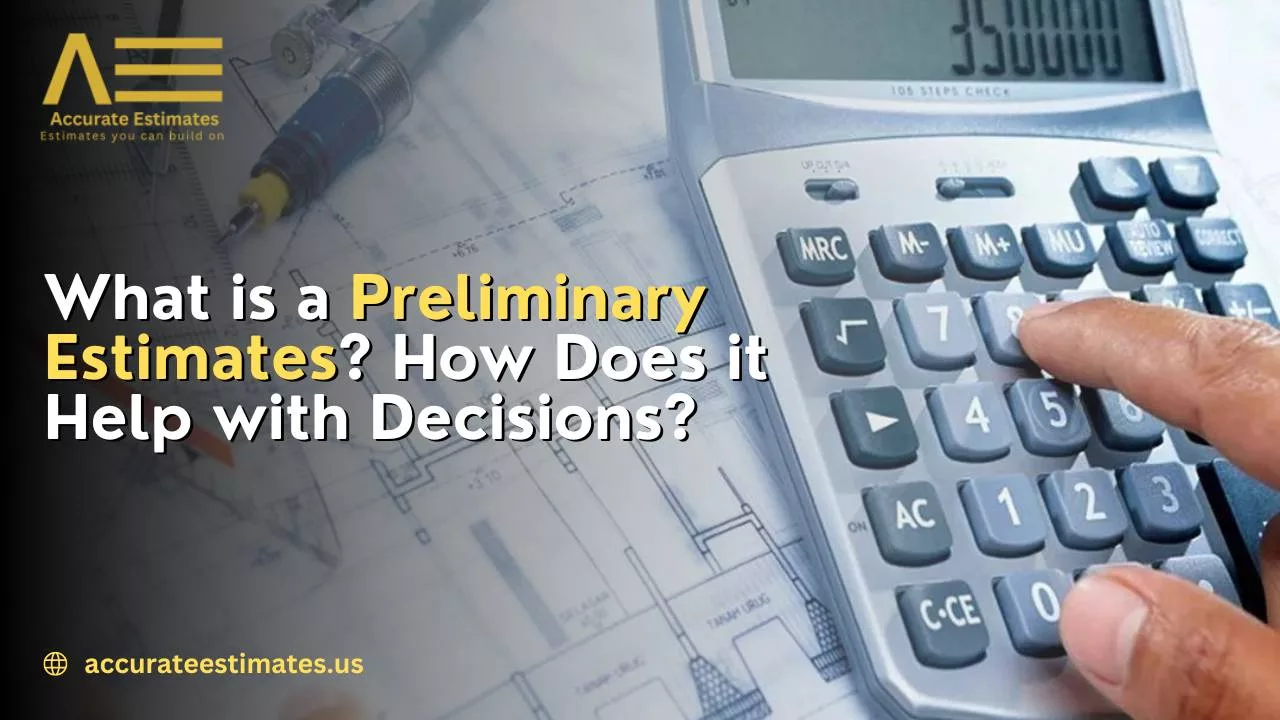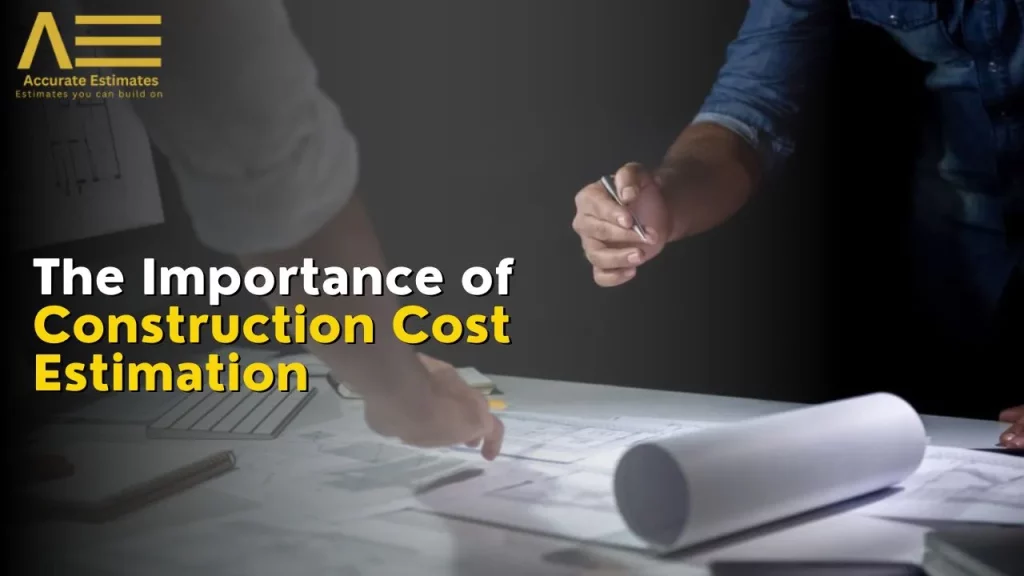What is a Preliminary Estimates? How Does it Help with Decisions?

Preliminary estimates are like early sketches of a project’s financial landscape. They provide a rough idea of what to expect regarding costs before diving into the nitty-gritty of detailed planning. Why do preliminary estimates hold such significance, and how do they facilitate decision-making? Let’s delve into the world of preliminary estimate to find out.
Understanding Preliminary Estimates
When planning any project, whether building a house, launching a new product, or organizing an event, understanding the potential costs involved is crucial. Preliminary estimate serve as the first glimpse into this financial realm, offering stakeholders an incomplete understanding of what they might be up against.
Importance of Preliminary Estimates in Planning and Decision-Making
Preliminary assessments serve as crucial guides during the initial phases of project inception. They provide essential insights that inform vital decisions, such as whether to proceed with a project, how to allocate resources, and what kind of budget to set aside. This preliminary guidance is necessary for stakeholders to navigate the dark, making decisions based on guesswork rather than data.
What Type Of Projects Require Preliminary Estimates?
Preliminary estimates hold significance in a multitude of industries and project categories. Whether construction projects, software development, or marketing campaigns, any endeavor with financial implications can benefit from preliminary cost estimation. Preliminary estimate are crucial in extensive projects with intricate specifications and involving various stakeholders.
Role of Preliminary Estimates
Think of preliminary estimates as the foundation upon which the entire project rests. They set the stage for further planning and decision-making, providing a framework. By outlining the potential costs upfront, preliminary estimate help stakeholders gauge the feasibility of their ideas and make informed choices about how to proceed.
Why Preliminary Estimates are Necessary
Imagine starting a journey without knowing how far you must go or how much fuel you need. That’s what it’s like to embark on a project without preliminary estimates. These initial approximations serve as a roadmap, guiding stakeholders through planning and helping them anticipate potential challenges and expenses.
Difference Between Preliminary and Detailed Estimates
While preliminary estimate offer a broad overview of project costs, detailed estimates dive deep into the specifics, leaving no stone unturned.
Scope and Detail
Preliminary estimates focus on high-level approximations, providing a general sense of what to expect regarding costs. Detailed estimates, however, break down costs into granular details, offering a more comprehensive understanding of each expense.
Accuracy and Precision
While preliminary estimate aim to provide a rough idea of costs, detailed estimates strive for utmost accuracy, incorporating precise data and calculations to paint a clear picture of the financial landscape.
Benefits of Preliminary Estimates
Let’s explore the myriad benefits that preliminary estimate bring to the table.
Informed Decision Making
By offering early insights into potential costs, preliminary estimates empower stakeholders to make informed decisions about project feasibility, resource allocation, and budget planning. This early understanding helps mitigate estimating risks and ensures that projects stay on track.
Cost Control and Budget Planning
Understanding the financial implications upfront allows businesses to establish realistic budgets and implement effective cost-control measures. Stakeholders can proactively mitigate risks and keep projects within budgetary constraints by identifying potential cost overruns early.
Project Feasibility Assessment
Preliminary estimate provide stakeholders with an opportunity to evaluate the viability of a project before allocating substantial resources. By carefully analyzing projected expenses versus anticipated advantages, organizations can strategically determine whether to move forward with a project or consider alternative avenues.
Preliminary Estimating Process
Now that we understand the importance of preliminary estimates, let’s look at the process of creating them.
1. Gathering Project Information
The first step in the preliminary estimating process is gathering relevant project information. This includes identifying project requirements, scope, and constraints and researching market conditions and industry benchmarks.
2. Cost Estimation Methods
Once the necessary information has been gathered, various cost estimation methods can be employed to develop preliminary estimate. These may include analog estimating, parametric estimating, or expert judgment, depending on the nature of the project and available data.
3. Documentation and Reporting
Documenting the preliminary estimating process and accurately reporting findings is essential. This ensures transparency and accountability and provides a basis for future decision-making and project planning.
When to Re-evaluate a Preliminary Estimate
Preliminary estimates are not set in stone and may need re-evaluation under certain circumstances.
Project Milestones
As a project progresses and milestones are reached, it’s essential to revisit preliminary estimate and adjust them accordingly. Modifications in project scope, prerequisites, or market dynamics might require revisions to the original estimations.
Significant Changes
Any significant changes to project parameters, such as budgetary constraints or resource availability, should prompt a reassessment of preliminary estimates to ensure they remain accurate and relevant.
Market Fluctuations
External elements like shifts in market dynamics, fluctuations in inflation rates, or alterations in material expenses may influence the overall expenses of a project. Consistently keeping track of these variables and making necessary adjustments to estimations aids in minimizing potential risks and promoting the triumph of the project.
How to Mitigate Risks Associated with Preliminary Estimates
While preliminary estimate provide valuable insights, they also come with inherent risks. Here are some strategies for mitigating these risks.
1. Thorough Research and Analysis
Devoting adequate time and energy to comprehensive research and analysis can play a crucial role in detecting potential risks and uncertainties at an early stage. By gathering relevant data and consulting subject matter experts, stakeholders can make more informed decisions and develop more accurate estimates.
2. Contingency Planning
Incorporating contingency reserves within preliminary estimates enables the consideration of unexpected occurrences or alterations in project scope. Stakeholders can better navigate unexpected challenges without derailing the project by setting aside additional funds or resources.
3. Collaboration and Expert Input
Working alongside teams with diverse skill sets and consulting with specialists in pertinent domains can offer valuable viewpoints and insights. By leveraging collective knowledge and experience, stakeholders can develop more robust and reliable preliminary estimate.
Preliminary Estimating Services
Specialized services are available for businesses and project managers seeking professional assistance with preliminary estimates.
Professional Assistance
Preliminary estimating services offer expertise in cost estimation, helping businesses navigate complexities and uncertainties to develop reliable estimates. These professionals bring experience and industry knowledge to the table, enhancing the accuracy and reliability of preliminary estimate.
Technology and Tools
Advanced technologies and tools can streamline the preliminary estimating process, making it more efficient and accurate. These technologies, from cost estimation software to digital modeling tools, enable stakeholders to develop more precise estimates and make better-informed decisions.
Conclusion
In summary, preliminary estimates are crucial in steering decision-making processes across diverse sectors. By providing early insights into potential costs and feasibility, they empower stakeholders to make informed decisions, set realistic budgets, and mitigate risks effectively. Whether embarking on a new project or assessing the viability of an endeavor, harnessing the power of preliminary estimate is essential for success. With careful planning, thorough analysis, and the right expertise, businesses can leverage preliminary estimates to navigate the complexities of project management and achieve their goals.


